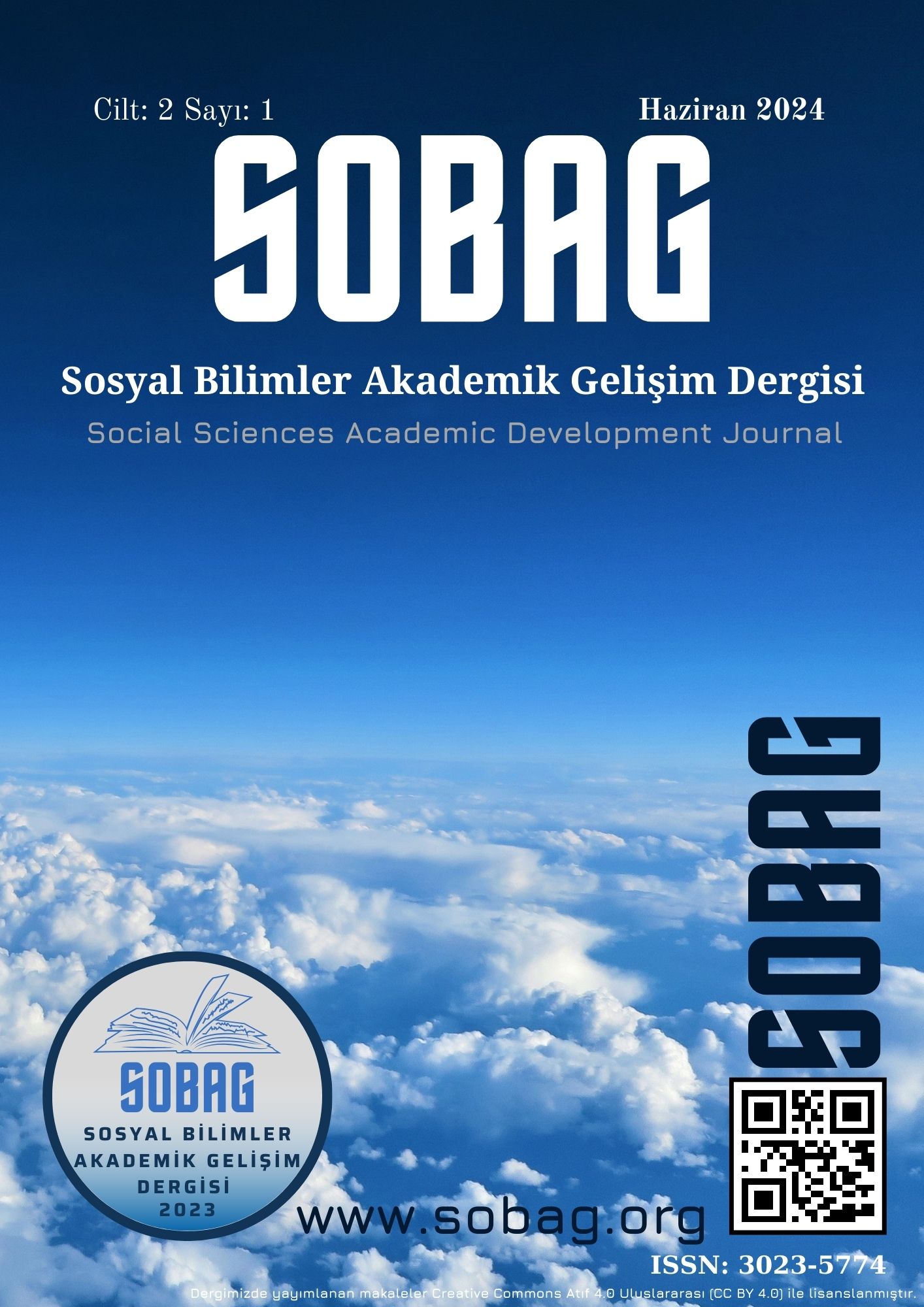The Impact of Artificial Intelligence and Automation on Employment: An Analysis of Turkey in the Axis of Labor and Robotization
The Impact of Artificial Intelligence and Automation on Employment: An Analysis of Turkey in the Axis of Labor and Robotization
DOI:
https://doi.org/10.5281/zenodo.12599863Keywords:
Employment, Artificial Intelligence, AutomationAbstract
Abstract
We are facing the biggest revolution since the invention of the steam engine and electricity. This 21st century revolution is based on artificial intelligence and automation technologies. With the development of productive artificial intelligence, both social and economic transformations of countries have begun. At this point, especially developed countries are carrying out many activities to become leaders in artificial intelligence and automation technologies. But this situation does not only concern developed countries. It is also important for underdeveloped and developing countries to develop and reach the levels of developed countries. Artificial and intelligence automation technologies, along with various positive assumptions, have raised concerns that people may lose their jobs and that robots and human labor may be replaced. At this point, it is important for countries to establish a labor policy integrated with artificial intelligence and automation technologies. In this study, the development of industrial robots, one of the important computational data of artificial intelligence and automation, is discussed. In particular, Turkey has been examined and the displacement effect of labor has been observed. As a result of the study, policy recommendations have been developed for Turkey.
References
Acemoglu, D., & Autor, D. (2011). Skills, Tasks and Technologies: Implications for Employment and Earnings. Içinde Handbook of Labor Economics (C. 4, ss. 1043-1171). Elsevier. https://doi.org/10.1016/S0169-7218(11)02410-5
Aswicahyono, H., & Rafitrandi, D. (2020). Emerging technology in Indonesia's manufacturing sector (CSIS Working Paper). CSIS Indonesia.
Brynjolfsson, E., Mitchell, T., & Rock, D. (2018). What can machines learn, and what does it mean for occupations and the economy? AEA papers and proceedings, 108, 43-47.
Brynjolfsson, Erik, and Andrew McAfee. 2014. The Second Machine Age: Work, Progress, and Prosperity in a Time of Brilliant Technologies. New York and London: W.W. Norton & Company.
Buchanan, B. G. (2005). A (Very) Brief History of Artificial Intelligence. Ai Magazine, 26. https://doi.org/10.1609/aimag.v26i4.1848
Bughin, J., Seong, J., Manyika, J., Chui, M., & Joshi, R. (2018). Notes from the AI frontier: Modeling the impact of AI on the world economy (Discussion Paper, September 2018). McKinsey Global Institute. Retrieved from https://www.mckinsey.com/featured-insights/artificial-intelligence/notes-from-the-ai-frontier-modeling-the-impact-of-ai-on-the-world-economy
Carbonero, F., Ernst, E., & Weber, E. (2018). Robots worldwide: The impact of automation on employment and trade. 21.
Frey, C. B., & Osborne, M. A. (2013). The future of employment: How susceptible are jobs to computerisation? Technological Forecasting and Social Change, 114, 254-280. https://doi.org/10.1016/j.techfore.2016.08.019
Ford, M. (2009). The lights in the tunnel: Automation, accelerating technology and the economy of the future. Acculant Publishing.
Ghys, T., Cools, P., Inzunza-Acedo, B. E., & Wright, C. (2021). Confronting robotization in Mexico.Tla-Melaua Revista de Ciencias Sociales,14(49).http://www.apps.buap.mx/ojs3/index.php/tlamelaua/article/view/1057
Hallward-Driemeier, M., & Nayyar, G. (2017). Trouble in the Making?: The Future of Manufacturing-Led Development. Washington, DC: World Bank. https://doi.org/10.1596/978-1-4648-1174-6
Huang, T., & Arnold, Z. (2020, June). Immigration Policy and the Global Competition for AI Talent. Center for Security and Emerging Technology (CSET).
Kumar, N., Kharkwal, N., Kohli, R., & Choudhary, S. (2016, February). Ethical aspects and future of artificial intelligence. In Proceedings of the 2016 International Conference on Innovation and Challenges in Cyber Security (ICICCS-INBUSH) (pp. 111-114). IEEE. https://doi.org/10.1109/ICICCS.2016.7542339
Lu, Y., & Zhou, Y. (2021). A review on the economics of artificial intelligence. Journal of Economic Surveys, 35(4), 1045-1072. https://doi.org/10.1111/joes.12422
McKinsey & Company. (2017). A future that works: Automation, employment, and productivity. McKinsey Global Institute.
Norton, A. (2017). Automation and inequality. 36. https://doi.org/11506IIED
NW, 1615 L. St, Washington, S. 800, & Inquiries, D. 20036 U.-419-4300 | M.-857-8562 | F.-419-4372 | M. (t.y.). Religious Composition by Country, 2010-2050. Pew Research Center’s Religion & Public Life Project. Geliş tarihi 16 Şubat 2024, gönderen https://www.pewresearch.org/religion/interactives/religious-composition-by-country-2010-2050/
Stevenson, B. (2020). Artificial intelligence, income, employment, and meaning. In A. Agrawal, J. Gans, & A. Goldfarb (Eds.), The Economics of Artificial Intelligence: An Agenda (pp. 417-432). University of Chicago Press. Retrieved from https://www.nber.org/system/files/chapters/c14026/c14026.pdf
Türkiye Cumhuriyeti Cumhurbaşkanlığı Dijital Dönüşüm Ofisi. (2021). Türkiye Ulusal Yapay Zeka Stratejisi 2021-2025. https://cbddo.gov.tr/SharedFolderServer/Genel/File/TR-UlusalYZStratejisi2021-2025.pdf
United Nations Industrial Development Organization (UNIDO). (2022). Industrial Development Report 2022: The future of industrialization in a post-pandemic world. https://www.unido.org/idr2022
UK Government Office for Science. (2024, May). International scientific report on the safety of advanced AI (Interim Report). https://assets.publishing.service.gov.uk/media/66474eab4f29e1d07fadca3d/international_scientific_report_on_the_safety_of_advanced_ai_interim_report.pdf
Downloads
Published
How to Cite
Issue
Section
License
Copyright (c) 2024 Social Sciences Academic Development Journal (SOBAG)

This work is licensed under a Creative Commons Attribution 4.0 International License.



